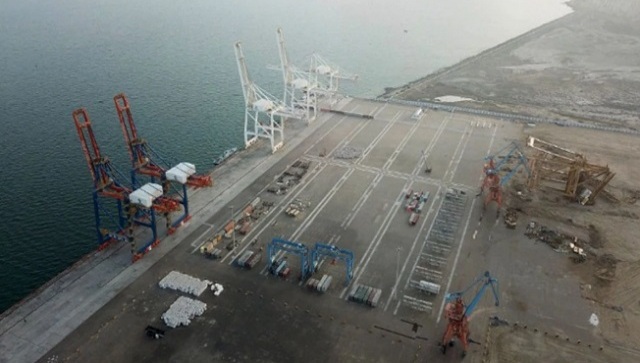Islamabad: Pakistan’s minister for planning Asad Umar has said that his country was not facing any “Chinese debt problem” as claimed by a western think-tank. Addressing media in Islamabad, Umar tried to play down concerns over loans to Pakistan under the China-Pakistan Economic Corridor project (CPEC). “We do not have a China debt problem," the minister said while acknowledging that Pakistan had an overall debt servicing and debt sustainability challenge. He was responding to a report by a US-based development research lab, AidData. It had raised four main issues about CPEC: lack of transparency, imposition of secret loans on Pakistan, loans being expensive and Pakistan’’s debt rising to a dangerous level because of CPEC. The report also claimed that Pakistan borrowed money from China at commercial rates. Umar said that CPEC related loans were not a secret and the information on various CPEC projects had been shared even with the International Monetary Fund (IMF) and that the Senate and the National Assembly committees had even had their queries answered. “Parliamentary oversight is present over it," he said and insisted that CPEC was a transparent project. He said the Chinese loans were of two categories: private loans and government-to-government loans. He said power projects under CPEC have an average 4 percent interest, adding that non-Chinese finance agencies, such as the World Bank and Asian Development Bank, provide money to Pakistan at higher interest rates than China. Umar said under government-to-government loans, China lent money under concessional loans and preferential bias credit at 2 percent, while bias credit was lent at 5.2 percent, making an average of 2.4 percent. If grants given by China were included, it came down to 1.98 percent. He said Chinese loans account for 10 percent of Pakistan’s total debt and 26 percent of the external debt, whereas 74 percent external debt was owed to western donors. “Pakistan does have a debt sustainability challenge, but it is not due to Chinese loans,” Umar said. Pakistan launched CPEC in 2015 but western experts have been warning that the country would face problems in future due to mounting Chinese debt. The CPEC, which connects Gwadar Port in Pakistan’s Balochistan with China’s Xinjiang province, is the flagship project of China’s ambitious multi-billion-dollar Belt and Road Initiative (BRI). The CPEC is a collection of infrastructure and other projects under construction throughout Pakistan since 2013. Originally valued at USD 46 billion, the projects were worth USD 62 billion as of 2017. India has protested to China over the CPEC as it is being laid through Pakistan-occupied Kashmir. The BRI was launched by Chinese President Xi Jinping when he came to power in 2013. It aims to link Southeast Asia, Central Asia, the Gulf region, Africa and Europe with a network of land and sea routes.
He was responding to a report by a US-based think tank, which alleged that Pakistan’s debt was rising to a dangerous level because of CPEC
Advertisement
End of Article


)

)
)
)
)
)
)
)
)



